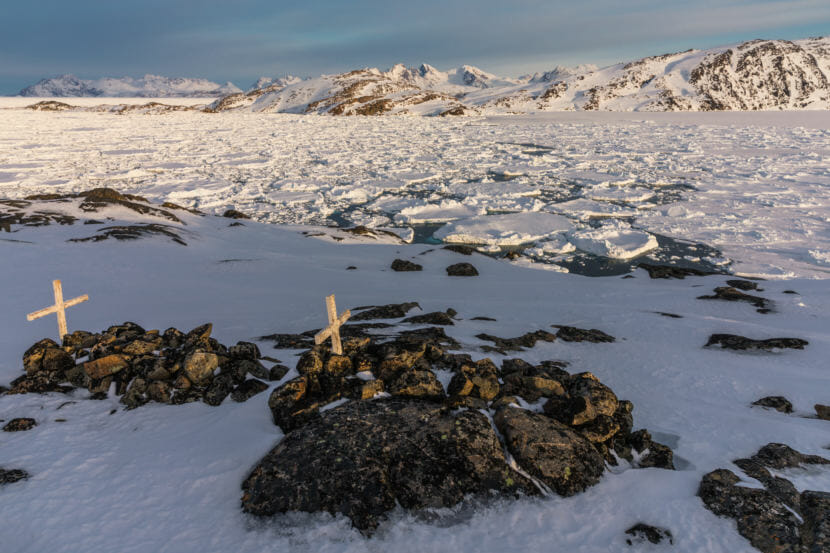
(Photo courtesy Markus Trienke)
For hundreds of years, animals and people have been buried in the frozen ground in the Arctic. Now, that permafrost is thawing and it’s exposing those bodies, and whatever killed them, to the outside world.
Michael Bruce is a public health physician and medical epidemiologist based at the Centers for Disease Control and Prevention in Anchorage. He told a crowd last week at the Bear Tooth Theater in Anchorage that infectious diseases are a growing threat throughout the Arctic.
“I think Louis Pasteur was right when he said “it’s the microbes that will have the last word,” Bruce said. “Or is it, it’s the zombies that will have the last word?”
Bruce spoke at length about the zombie apocalypse that could be happening in the Arctic. But, it turns out he didn’t mean the “shuffling around, eating brains, making zombie noises” kind of apocalypse.
“I think my analogy to zombies was more the ability of infectious diseases to come in and wreak havoc on populations and the planet,” Bruce said. “Not so much, reviving dead bodies to come back to life.”
Still, there are some very real threats locked up in all of that ice and frozen permafrost.
In Russia, for example, an anthrax outbreak two years ago killed one 12-year-old boy and sickened dozens of other people.
That outbreak has been linked to the region’s reindeer herds and melting permafrost.
“What happened is reindeer herders in the Yamal Peninsula were grazing their reindeer over reindeer that had died of anthrax decades or centuries ago,” Bruce said. “And they then contracted anthrax because of this and were exposed to it because it melted out of the permafrost.”
Bruce also said that anthrax is a very resistant organism. Once it gets into the environment, it can be hard to kill. Other types of infectious diseases might be more difficult to spread.
“That’s kind of the big question, I think, is whether those bacteria and viruses survive intact,” Bruce said.
Research is showing that there are some that survive intact, but Bruce said most of them don’t appear to be causing diseases in human beings.
Still, a warming Arctic could cause Alaskans to be sickened in other ways. Bruce said there are more ticks coming into the state. The pests can hitch rides on pets or wild birds.
Bruce said the ticks do better in a warmer climate and they may be able to migrate into the state, survive and spread diseases.
Rashah McChesney is a photojournalist turned radio journalist who has been telling stories in Alaska since 2012. Before joining Alaska's Energy Desk , she worked at Kenai's Peninsula Clarion and the Juneau bureau of the Associated Press. She is a graduate of Iowa State University's Greenlee Journalism School and has worked in public television, newspapers and now radio, all in the quest to become the Swiss Army knife of storytellers.




